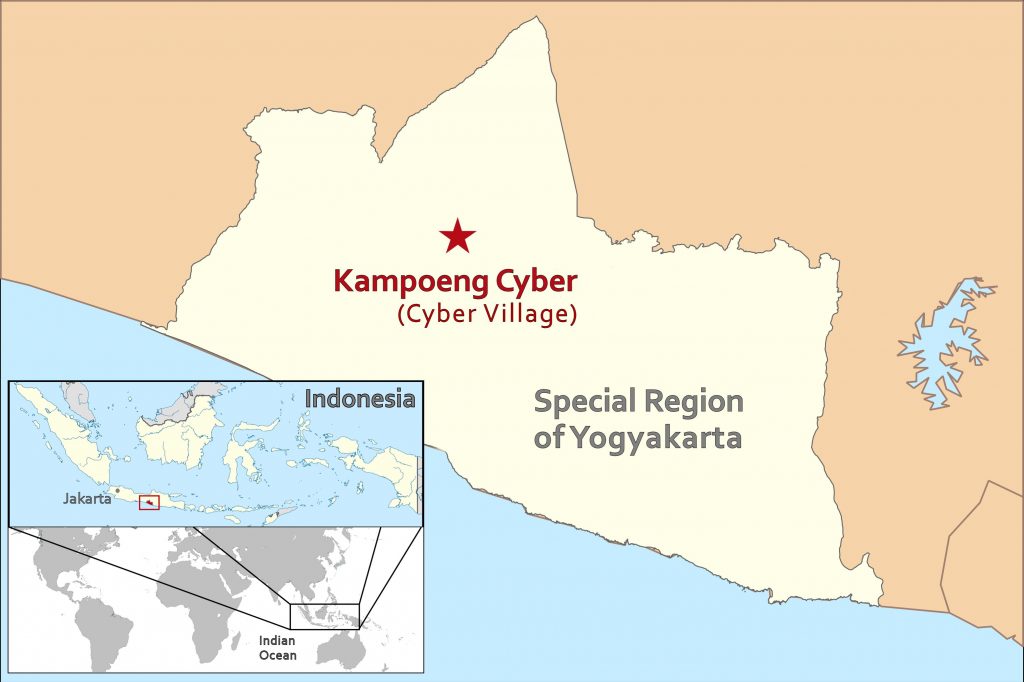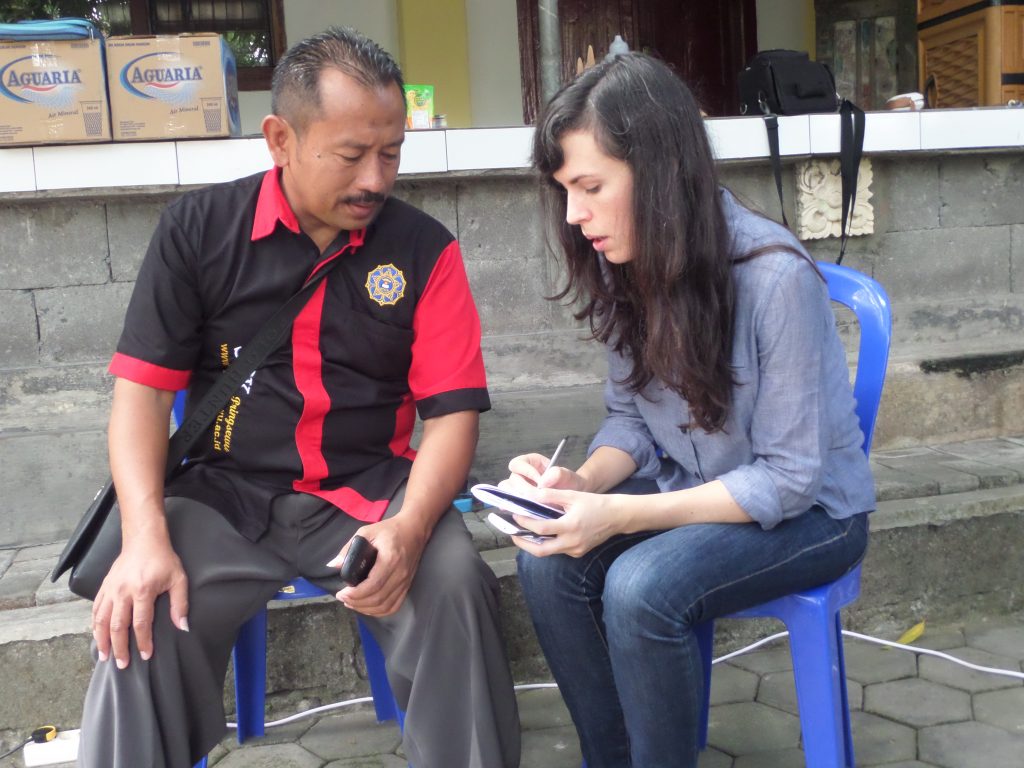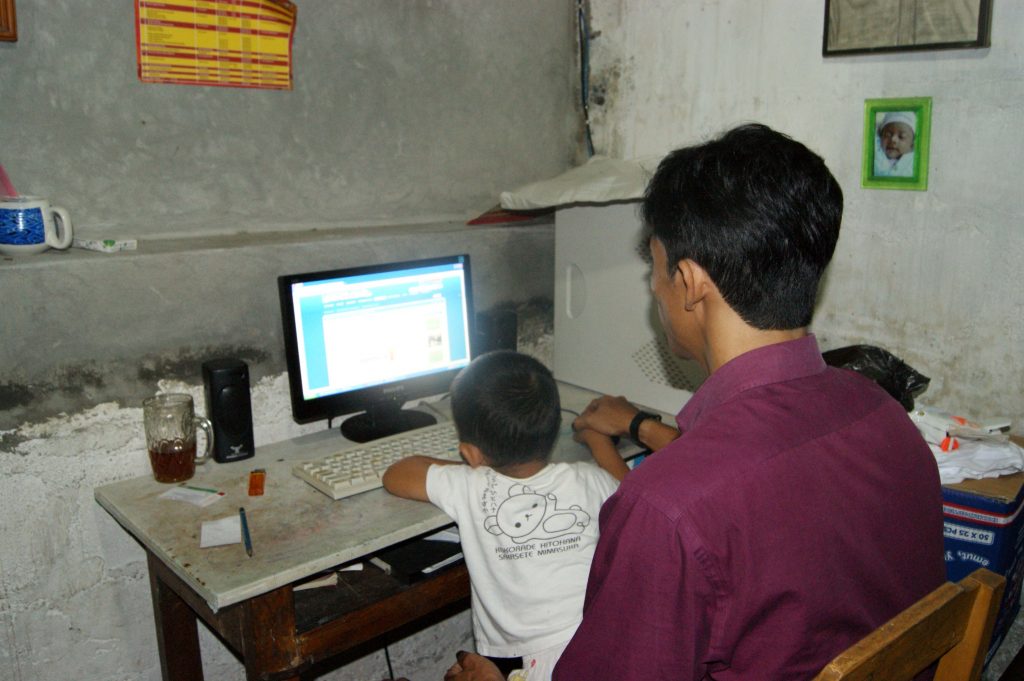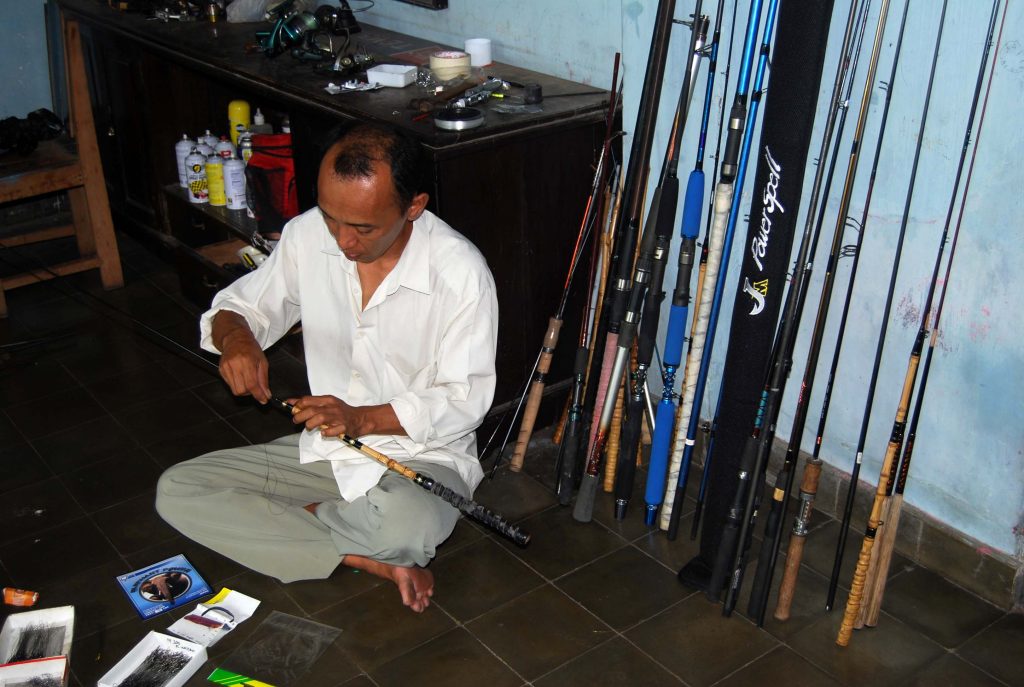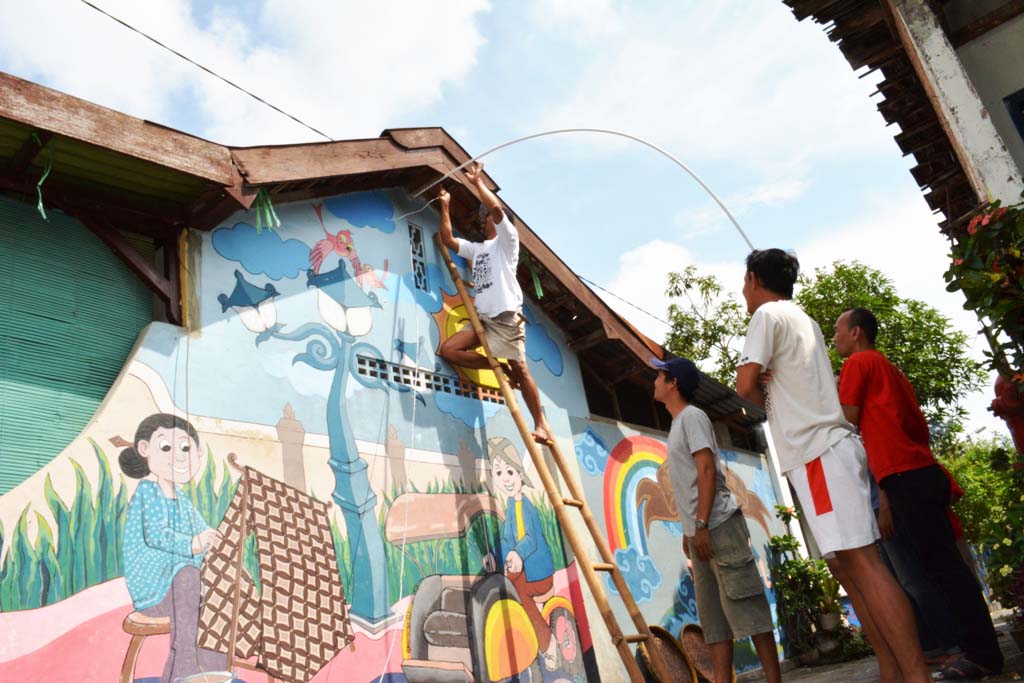The Birth of Indonesia’s Cyber Village
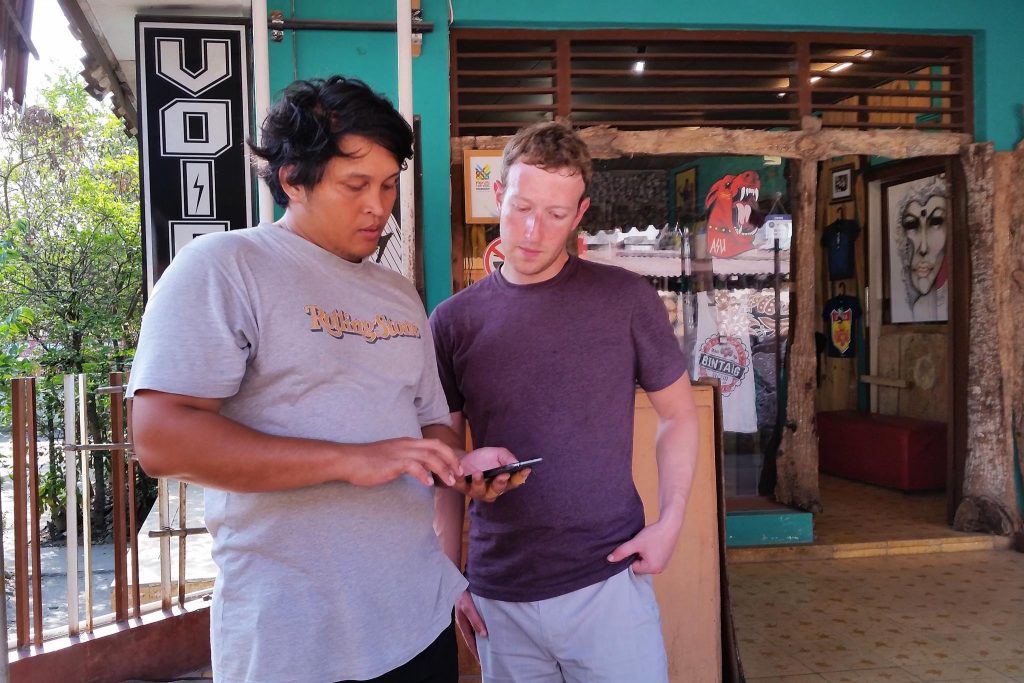
In the heart of Yogyakarta, Indonesia’s former capital, homes and shops have literally wormed their way into the ancient walls of a sultan’s opulent 18th-century palace. Koko Mariko and Heri Sutanto grew up as neighbors, playing in the winding alleyways that form a maze around the sultan’s former royal gardens and bathing pools. It is a place steeped in history and tradition.
As adults in the early 2000s, both Mariko and Sutanto saw hints of how computers might change traditional ways of life in their urban neighborhood (locally called a kampung). But they had no idea that they themselves would kick-start a local internet revolution that would thrust their town into the spotlight and bring Facebook’s CEO Mark Zuckerberg to their doors.
When Canadian anthropology student Jessika Tremblay stumbled into Mariko and Sutanto’s lives in 2012, she discovered an anthropological gold mine—an ideal case study for understanding how communication technologies are changing traditional communities. Mariko and Sutanto had recently woven together a tiny nest of households with a new identity as an internet-connected community, called Kampoeng Cyber or “Cyber Village” (kampoeng is an older spelling of kampung).
In a country where internet connection is spotty and expensive—only 29 percent of households throughout Indonesia’s many islands had internet access as of 2014, ranking it 53rd among developing countries—Mariko and Sutanto’s community banded together to get affordable cable access for roughly 25 households. Strikingly, in an age when governments of developing countries are working hard to connect their citizens to the internet and help them leapfrog into places of higher learning and commerce, this community did it entirely of its own volition and solely using its own resources. Kampoeng Cyber’s founders hope that their success might help light the path to internet connectivity for other internet-challenged communities around the world.
“We were the first kampung which initiated collective internet connection for people’s empowerment,” says local resident and anthropologist Sri Marpinjun, whose home is sometimes used as a computer training center for young people in the community. “This is a beautiful old part of the city. And it’s an old idea: Neighbors help neighbors,” says Janice Newberry, an anthropologist at the University of Lethbridge, Alberta, who has studied kampung life in central Java, Indonesia, since 1992 and recently visited Cyber Village. “An old idea, but a very new application.”
Kampoeng Cyber has become famous in Indonesia, with local anthropologists and technology students knocking on doors to study the community’s efforts. But it remains a relative unknown in the Western world. Tremblay is the only foreign anthropologist to have studied the community intensely, living among its residents for 18 months in 2013 and 2014.
Kampoeng Cyber is by no means the only pocket of internet connectivity in the developing world. But it is a rare example of how such connectivity has become the very core of a community’s identity thanks to the ingenuity, perseverance, and marketing instincts of its founders. And it supports the theory that while sweeping internet infrastructure needs to be built and supported by governments from the top down, the final step of connecting lower-income users is often most successful when driven from the bottom up.
Tremblay happened upon Kampoeng Cyber by accident. She had gone to Yogyakarta in 2012 to learn the language and to look for a good research site for her doctoral dissertation. She wanted to focus on communication technologies. Local university students took Tremblay on a walking tour of the famous Yogyakarta Palace and the so-called mouse paths (jalan tikus) of streets where locals have built their homes and shops into the ancient walls. It was the kind of tour that any visitor might be taken on. “So we were walking through these winding paths, and someone said, ‘Hey look at this sign, you might be interested in this.’ I had no idea what it meant, it just said ‘Welcome to Kampoeng Cyber.’”
Tremblay quickly learned what the community was and how it started—a tale that has become local lore. “I kept hearing this narrative probably a hundred times throughout my stay,” she says, laughing.
Indonesian cities and towns are split into tiny units, or kampung, each comprised of about 50 households, operating like villages with their own elected administrators and a strong sense of community spirit. In the early 2000s, Mariko started taking photos and collecting stories that showcased his community’s volunteer work (kerja bakti), such as hosting community picnics or cleaning ash off the street after a volcanic eruption. Community work is a critical part of what it means to be a good citizen in Indonesia, and Mariko was proud of his kampung. He started a blog to document it. “He’s a graphic designer, so he knew how to use computers,” recounts Tremblay. “But if he wanted to show anyone the blog he had to invite them to his house to show them on his screen.”
His neighbors were keen to buy their own computers, but they didn’t have the skills to use them. Sutanto, who works as a university administrator and was the elected leader of the neighborhood at the time, rented the university’s computer labs for a couple of days and invited everyone to join him for a lesson. “So little by little people got computers and kept asking Heri how to connect to the internet,” explains Tremblay. Here was the sticking point.
In Indonesia, modems are unreliable and slow, and cable connections can be prohibitively expensive for this sort of community—about US$25 per month—where someone working as a driver, for example, makes about US$200 per month. Based on 2014 statistics, a recent affordability report showed that a 500 MB broadband plan would soak up about 10 percent of a lower-income person’s salary in Indonesia. That’s twice the country’s affordability target of 5 percent.
“So they came up with this idea of connecting through Heri’s house,” Tremblay continues. The community simply split cables off a central modem, cutting individual costs by about 80 percent, says Marpinjun. (The local internet provider, Telkom Speedy, declined an interview request.) By 2009, within a year of starting out, most of the kampung—about 25 households totalling approximately 150 people—were connected and using the internet to build their businesses.
This revolution came at a critical time in the area’s history. Traditionally, this little borough, like many others in Yogyakarta, was famous for its batik—the art of using wax and dye to create intricately patterned cloth. But the Asian financial crisis of 1997 caused cloth prices to skyrocket, and the market for high-value batik crashed. These communities had to find something else to do. One became “Vegetable Village” (Kampung Sayur), famous for its communal gardens. Another became “Green Village” (Kampung Hijau), with luscious flower gardens and shade trees for tourists. Sutanto realized they could boost the value of their wired-up community by making it central to their identity. Thus “Cyber Village” was born, complete with signs and wall murals like the one Tremblay first saw in 2012.
“It’s funny. I get the impression the residents don’t see it as a really big deal,” says Newberry, the University of Lethbridge anthropologist. “This is what Indonesians do. They work at the community level to solve problems. But it has come with all these unexpected side benefits.” Perhaps the biggest boon is that local businesses get more attention because of their affiliation with the Cyber Village brand.
Mariko, Sutanto, and other community leaders have welcomed attention from journalists and students. When Tremblay sent Sutanto a message through Facebook explaining that she’d like to study the community, he invited her to live in his family home. “Don’t forget that it’s the strong spirit of togetherness/cooperation from the local residents that has allowed us to become like this,” wrote Mariko in an email (translated by Tremblay).
Other places in Indonesia have attempted to boost their internet connectivity too. A large neighborhood within the nearby town of Solo (also known as Surakarta) called itself the “Internet Community” and forged cheap internet connections, aiming to hook up and publicize family businesses. “They just haven’t become quite as famous; I guess they didn’t have the same public relations skills,” says Tremblay. A 10-minute motorcycle ride away from Kampoeng Cyber is Yogyakarta’s Suronatan Digital Village, which has developed a system for offering inexpensive 24-hour Wi-Fi access in hotspots throughout the neighborhood. But this digital village hasn’t achieved the fame of Kampoeng Cyber either.
A program initiated by the Indonesian government to establish internet cafes has also not proven successful. “I went looking for a lot of these projects, but often there would be five or six computers with teenagers playing video games, or it would be closed or [have] just a bunch of furniture stacked up, and village leaders wouldn’t want to talk about it,” says Tremblay.
In Kampoeng Cyber, the story is a rosier one. Tremblay saw firsthand how the network has led to successful local businesses. One of Sutanto’s neighbors, for example, was keen on fishing. He started making his own gear and selling it from his living room. And he used his newly forged internet connection to write a fishing blog and build interest in his products. This gave him enough financial support to open a shop on the main street, attracting passers-by and tourists.
The fisherman’s son, meanwhile, began learning to do special effects makeup for movies, in part by asking his Facebook friends for suggestions of YouTube instructional videos. “He started making fake mustaches and beards in particular. It sounds silly, but he’s actually very good at it, painting on every individual hair,” says Tremblay. This led to a commission to do makeup for Soekarno—a famous Indonesian movie filmed in Yogyakarta and inspired by the life of the first president of independent Indonesia. “That’s his big success, his proud moment,” she adds. He also does historical re-enactments that often wind up on local television, she says. “His business is very much based on the internet.”
Others are using the internet to boost more traditional business ventures such as selling fried chicken and silk-screening logos onto plastic bags. Sutanto still works at the university but spends his afternoons and evenings selling antique batiks on Facebook, says Tremblay, largely to a network of expatriate Indonesians.
“It is amazing, but it’s out of necessity,” says Tremblay of the community’s diverse entrepreneurial success. “The dream of most Indonesians is to be a civil servant; you get a salary, and a pension and benefits. There are very few 9 a.m. to 5 p.m. jobs. Most families need to rely on home businesses. Most neighborhoods are saturated with shops all selling the same stuff, so out of necessity people are becoming quite creative.”
Facebook has played a big role in many of these commercial ventures, helping people spread information about their businesses and gain contacts. This is perhaps surprising, given that the kampung is already a physical embodiment of social media. In Indonesia, local news is spread through people “hanging out” (nongkrong) with neighbors on their front stoops at about 3 p.m., as the heat of the day wanes and most chores are finished up. People have extremely strong ties to their local communities—births, engagements, and even circumcisions often require the family to go door to door and hand deliver the news. This is very different from most Western societies where close neighbors make up only a tiny percentage of one’s network of friends, vastly outweighed by work colleagues, old school friends, and far-flung family. Yet in Kampoeng Cyber, “people who know each other very well and spend all day together often communicate by Facebook,” says Tremblay, chuckling.
The effects of the internet and social media on the developing world are by no means consistent across regions. Daniel Miller, an anthropologist at University College London in the U.K., heads an international project aiming to document how social media is used in nine sites around the globe. The project showcases nine anthropologists, each of whom spends 15 months in one of the communities in countries as diverse as China and Chile. They have found huge differences in how the internet is used by, and has affected, various groups. (For an example from Asia, check out Dancing “My Humps” in Rural China.)
One field site in the northern Chilean town of Alto Hospicio had a striking lack of formal commercial businesses, given its population of 100,000 people—but it had dozens of successful Facebook pages for buying and selling everything from houses to sushi. In Trinidad, by contrast, people still preferred to shop in person rather than online. Tremblay says that the particular meld of dense neighborhood living, strong social ties, and financial upheaval helps to make the Indonesian case an especially unique one.
While every place is different, governments and development groups are pushing for more internet access around the globe. A 2010 World Bank study found that a 10 percent increase in broadband penetration added about 1.38 percentage points to the gross domestic product of developing countries. The U.N. Broadband Commission for Sustainable Development, established in 2010, reported in 2015 that more than half of the world’s 7 billion people are still offline. That figure includes two-thirds of the developing world and 90 percent of the least-developed countries. In September 2015, the U.S. Department of State launched a Global Connect Initiative to try to bring 1.5 billion more people online by 2020.
Other “cyber villages” are popping up around the developing world. In India, where about 15 percent of homes have broadband internet access, cyber hubs have been declared in Chandoli, in the state of Rajasthan, and in Melli Dara Paiyong, in southern Sikkim.
Facebook’s co-founder Zuckerberg is trying to facilitate the growth of cyber villages and community connectivity (and expand the company’s global reach) by partnering with nongovernmental organizations and local internet providers to give free or low-priced internet access to select sites for many of the world’s poor and marginalized. Launched in 2013 with the declaration that “connectivity is a human right,” the Internet.org project (now called Free Basics) has made the internet available without charge for people to access certain sites including Facebook, Wikipedia, BBC News, and weather services in about 40 countries in Africa, the Middle East, Latin America, and Asia. The program has been controversial for creating a tiered internet in which some sites are freely accessible and others are not; India pulled out of the project in February, declaring that it violates the country’s rules on “net neutrality.”
Indonesia joined the project in 2015, a year after Zuckerberg visited Kampoeng Cyber. “I stopped and talked to the owners of some of the shops, and it was inspiring to see how being connected was helping people share their talents and ideas with the world,” Zuckerberg wrote on his Facebook page. (His team declined an interview.)
“He wanted no attention … he flew under the radar and just showed up,” says Newberry, who heard the story from Kampoeng Cyber residents. “He was quite taken with it, apparently.”
“We chatted for about 15 minutes,” says Mariko, who was surprised by Zuckerberg’s impromptu visit. “After that Mark took his leave and left me his private email in case I wanted to contact him again.”
Zuckerberg isn’t the only one who is impressed. The kampung has also attracted the attention of Indonesia’s minister of communications technologies, who granted them US$2,000 to continue their work, says Mariko. Residents joke that they’re not entirely sure what to do with the money, Tremblay notes, laughing, since they’ve already done the hard work of connecting up their homes.
The aid could also go in the other direction: Instead of the government helping these people access the internet, the community might help the government find new strategies to inspire others and show through example the value of connection. “We are open for other communities to come and learn from us,” says Mariko. Tremblay, for one, hopes to take him up on that and visit again soon.

































